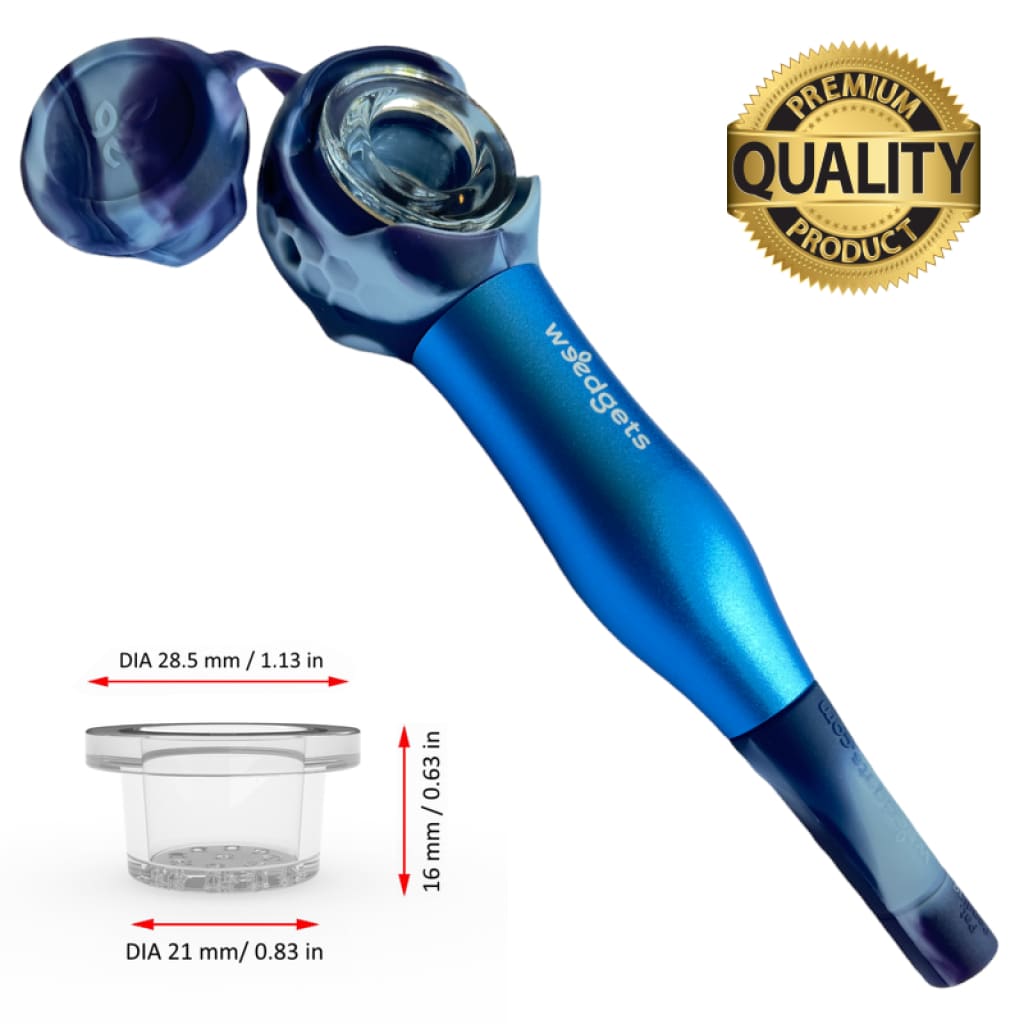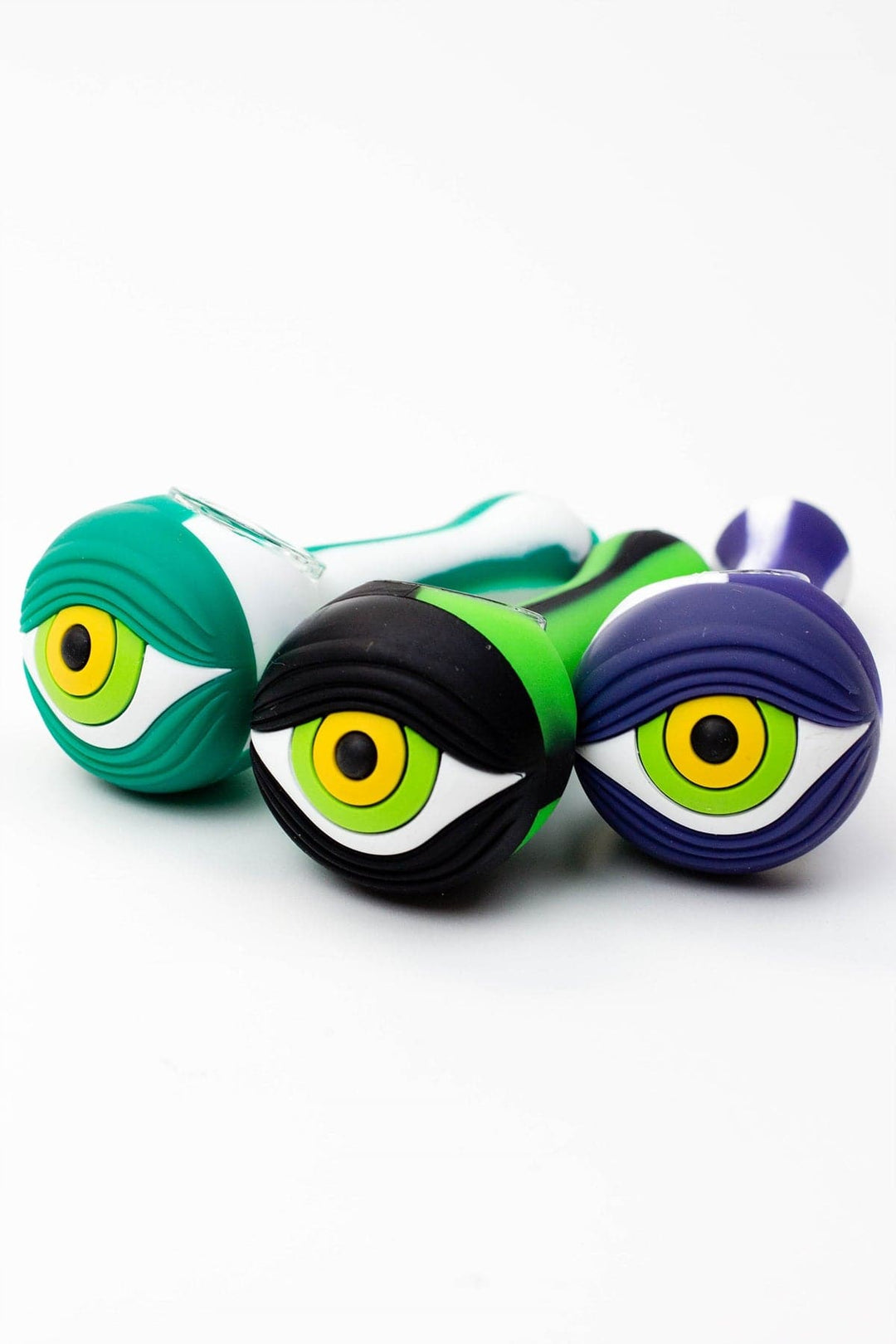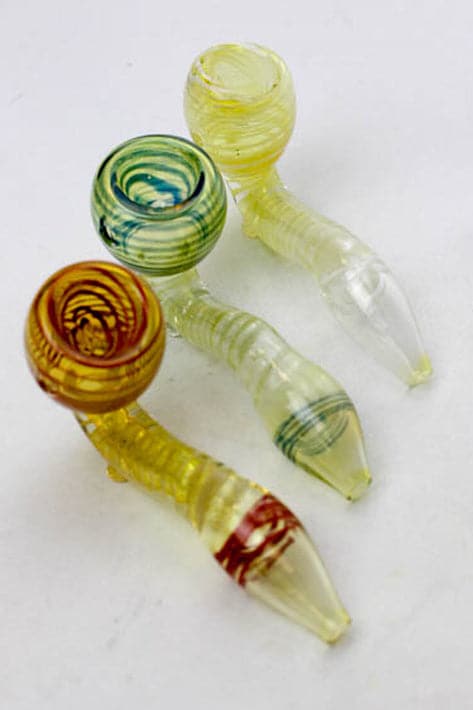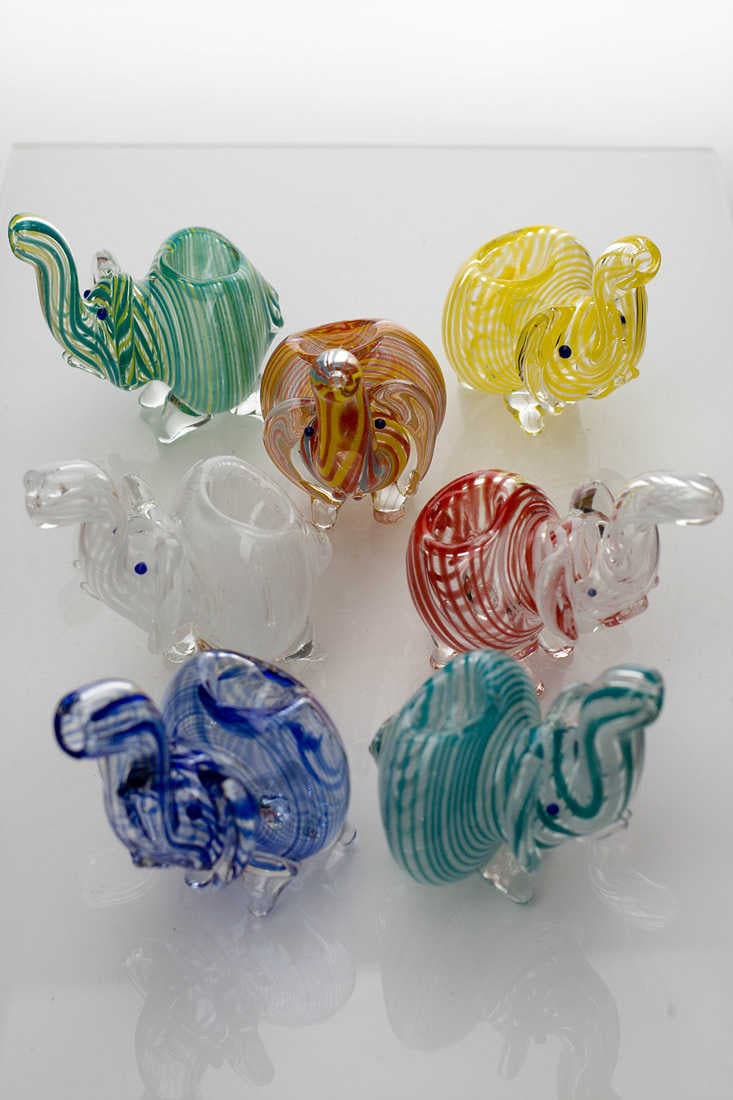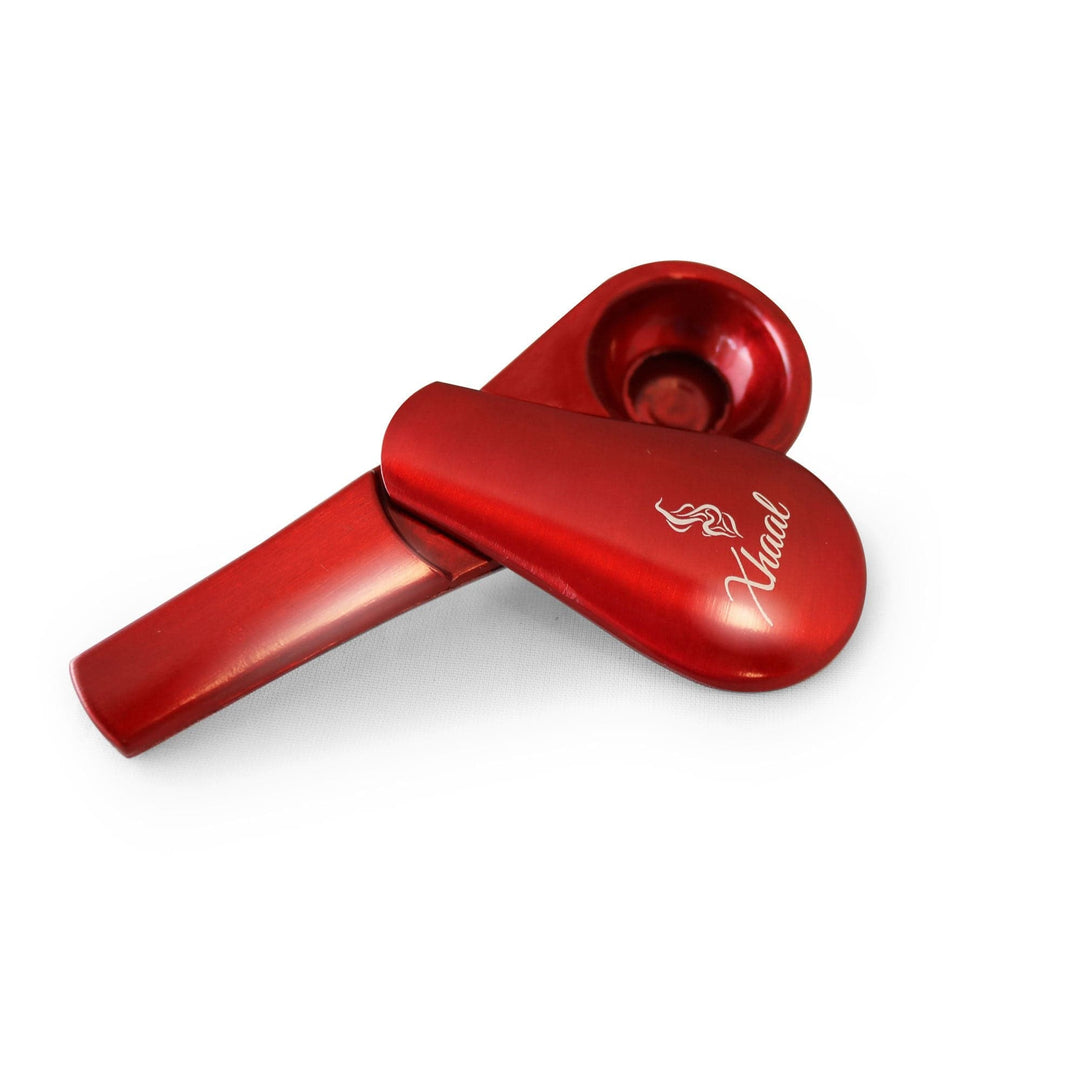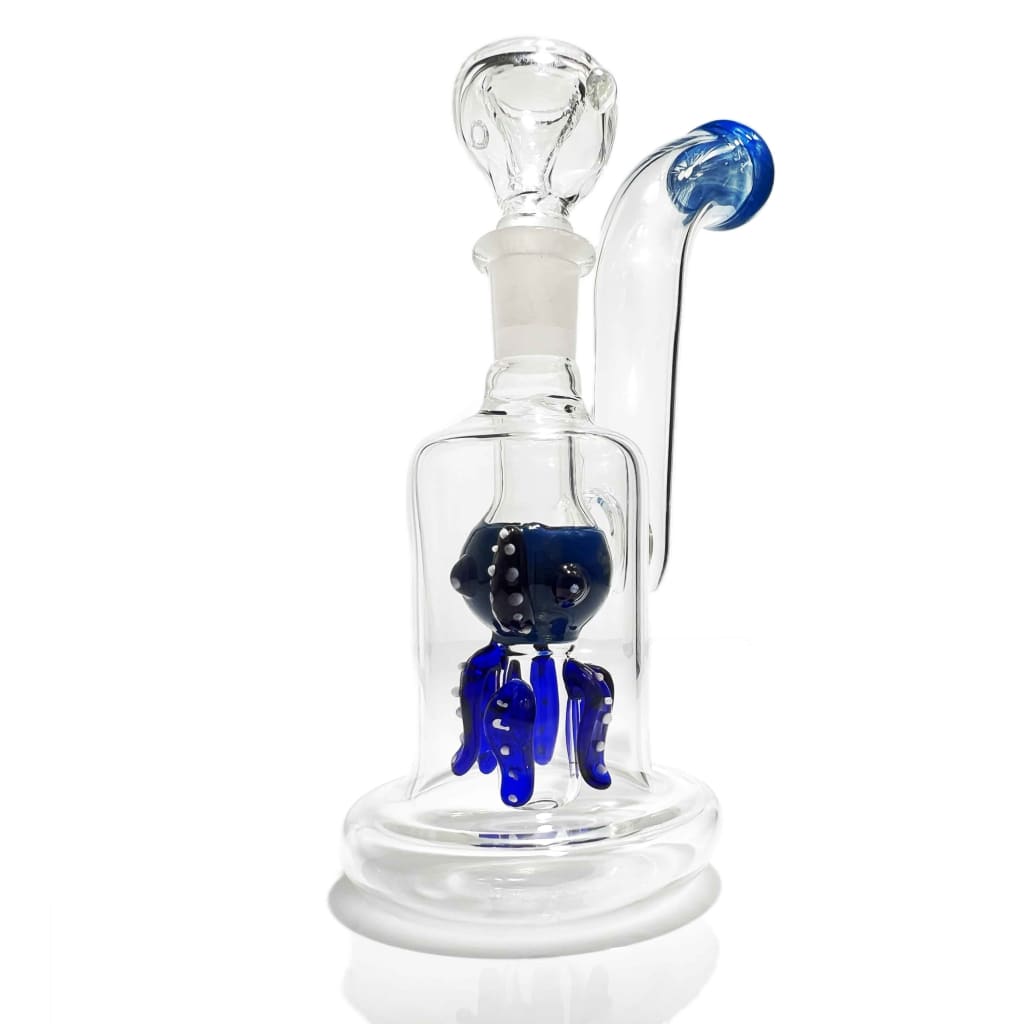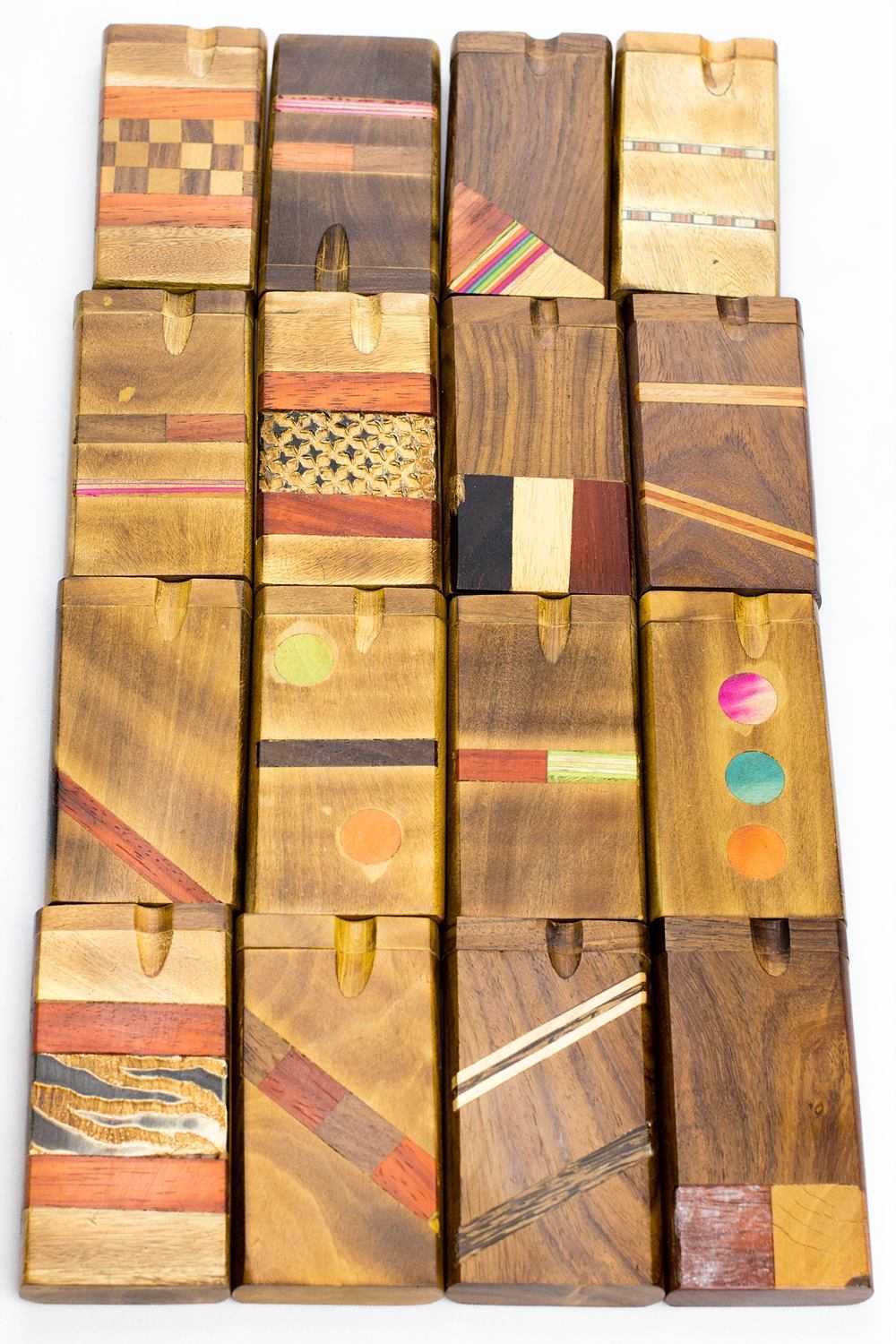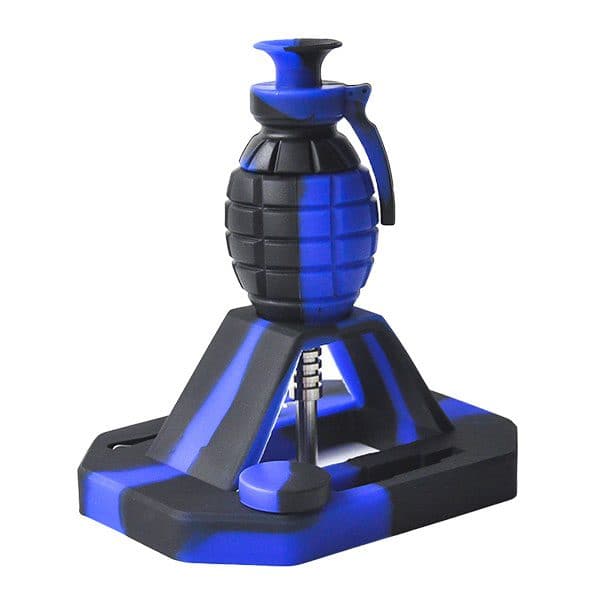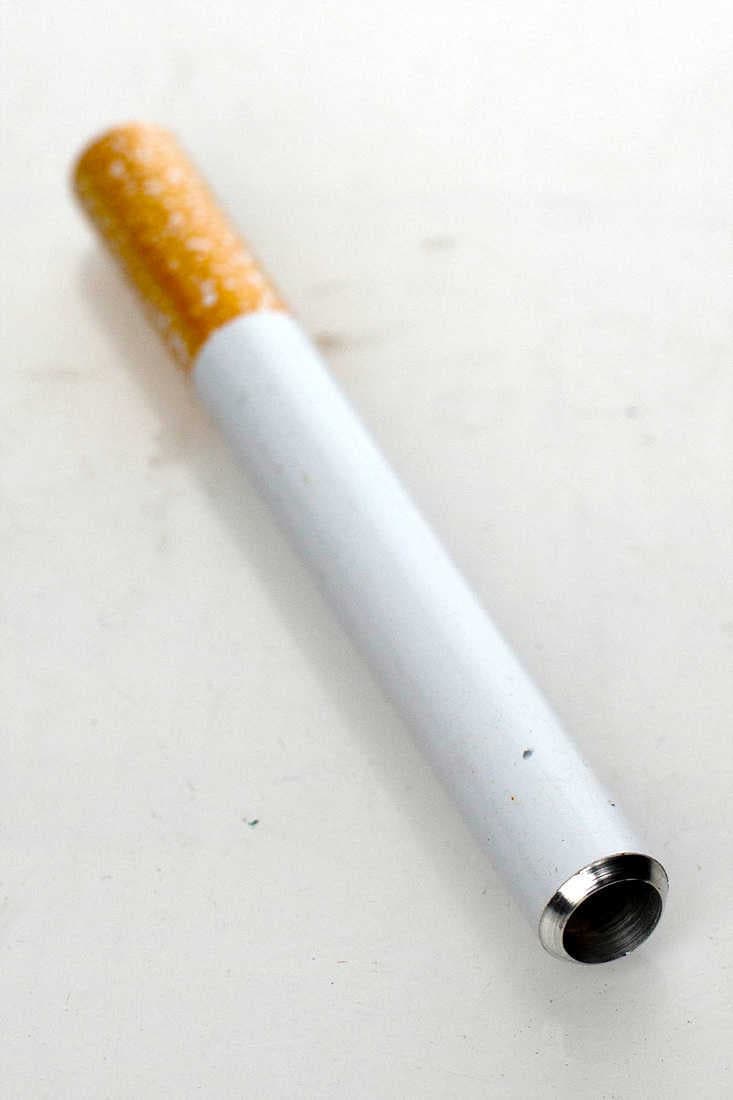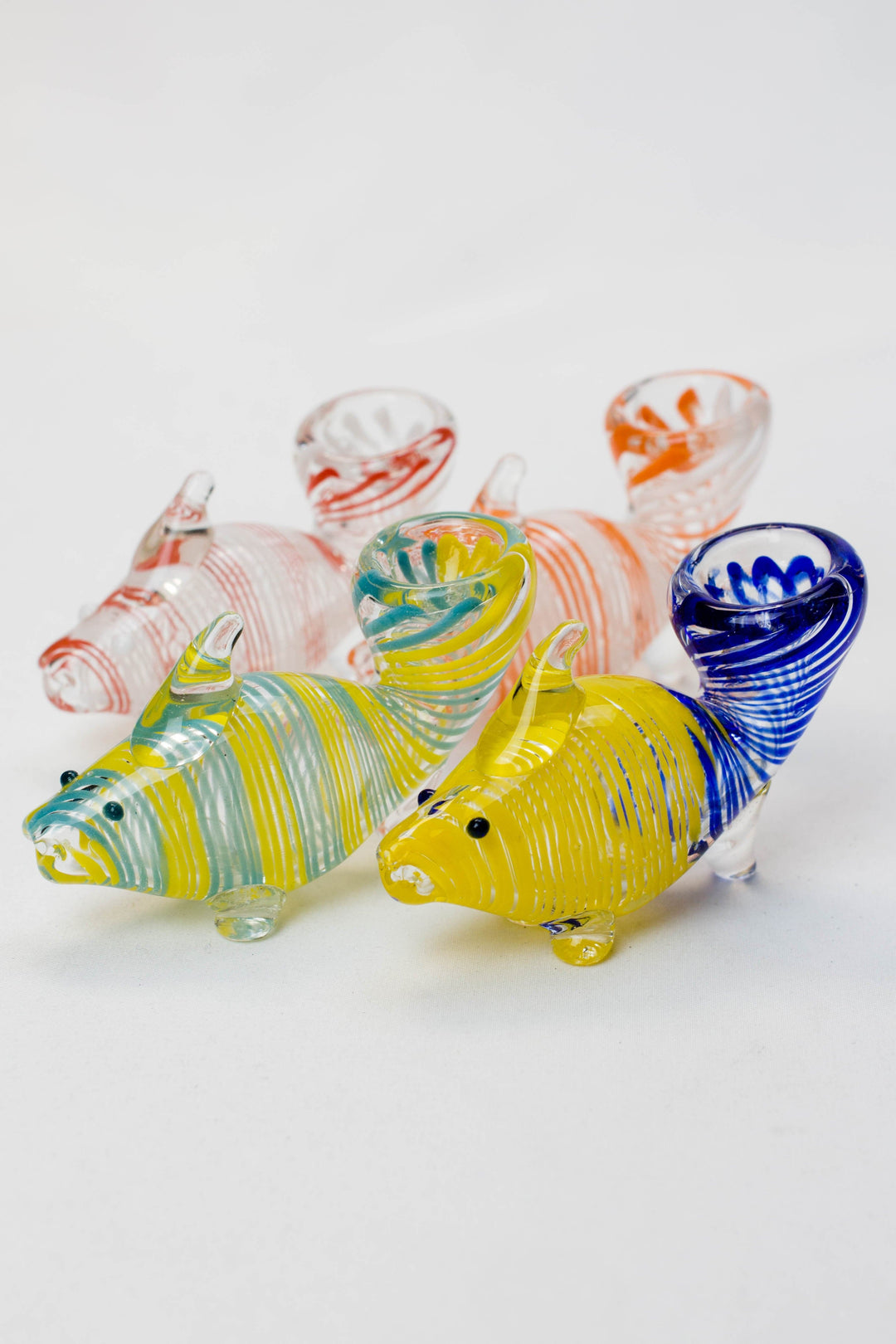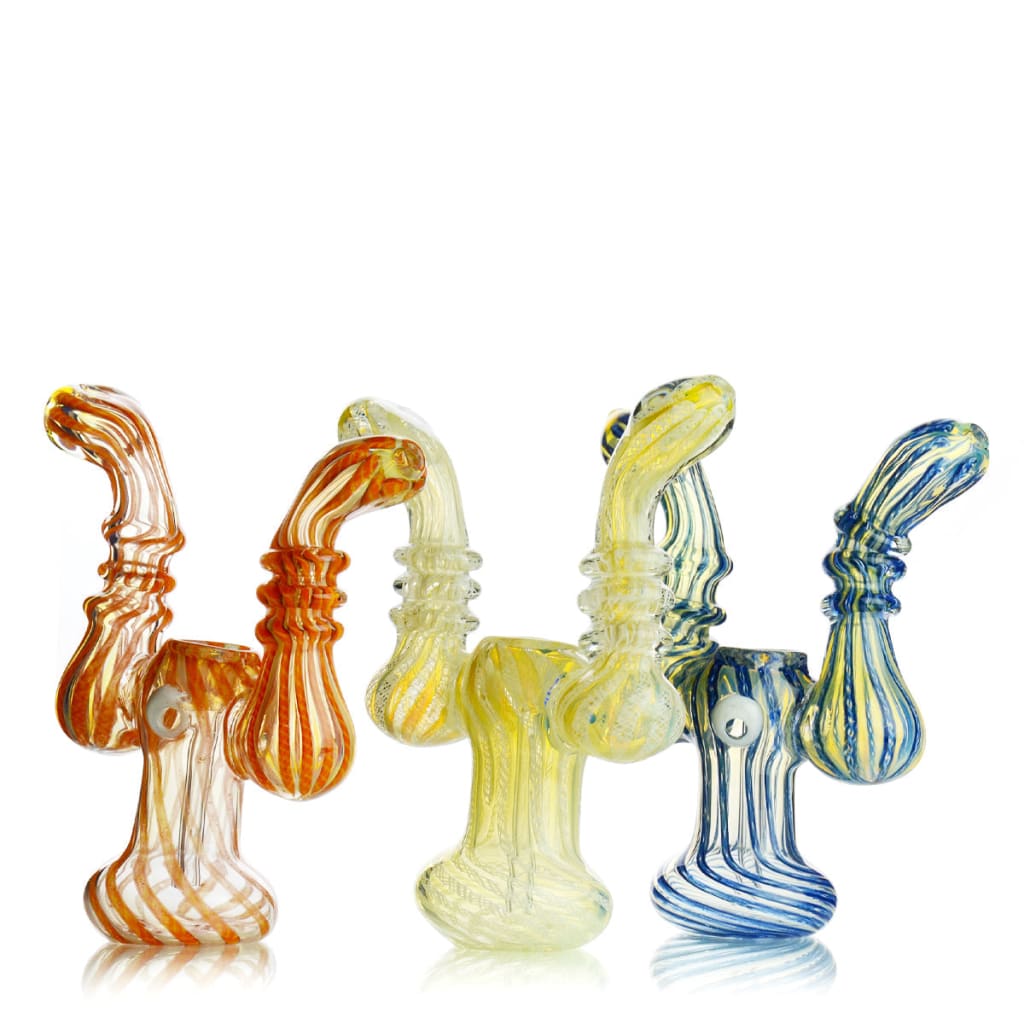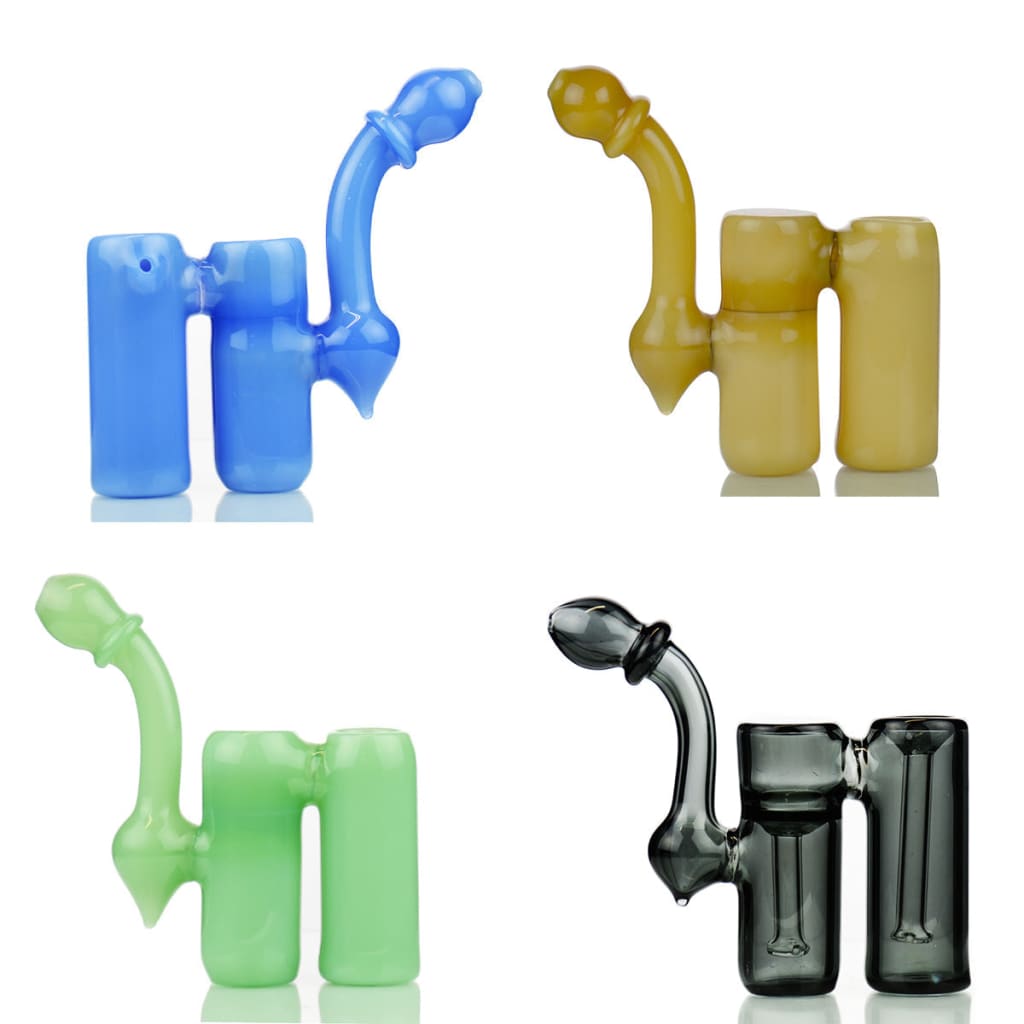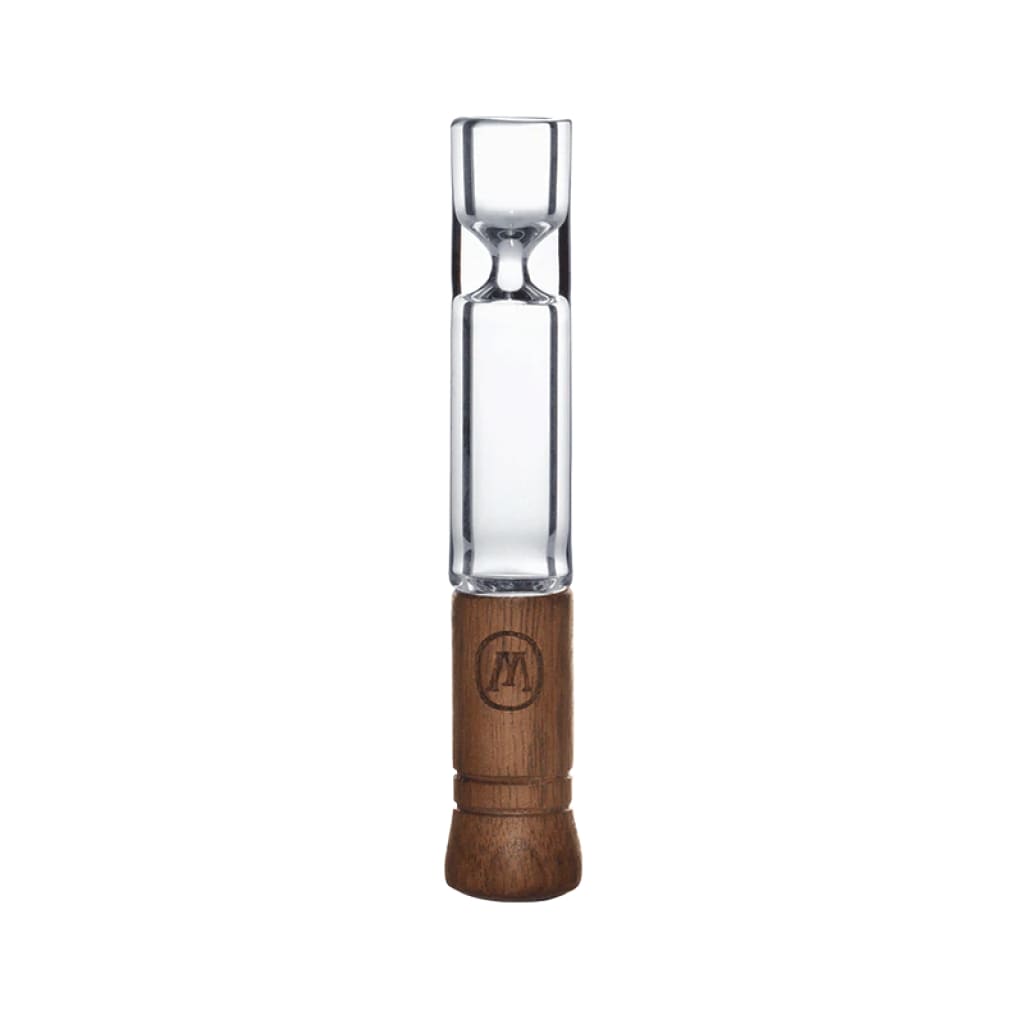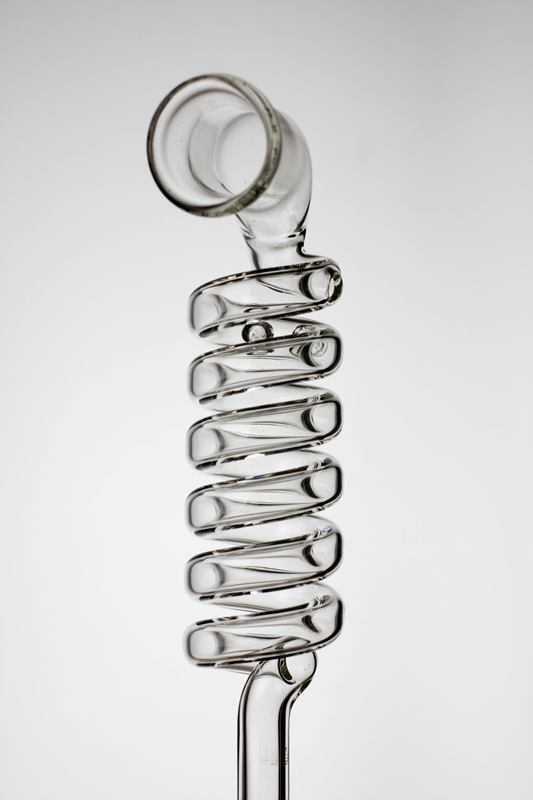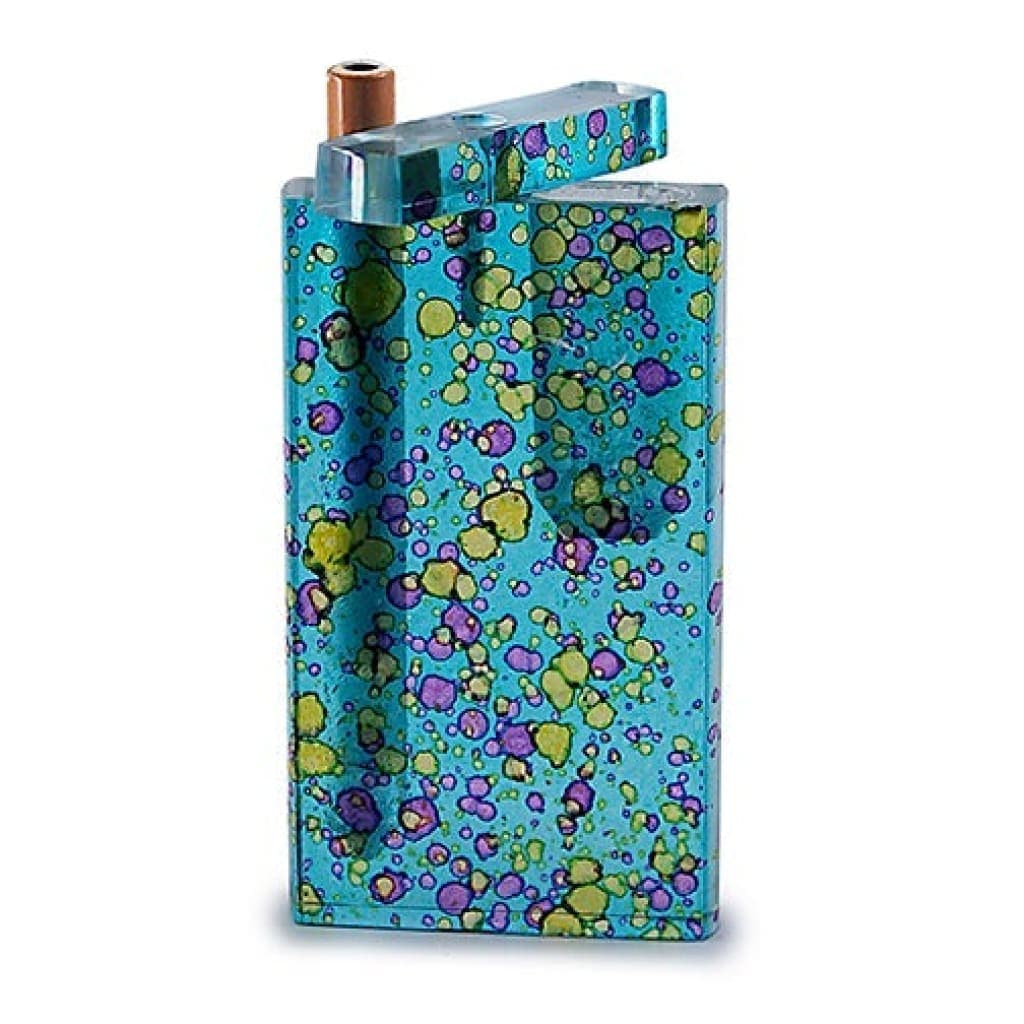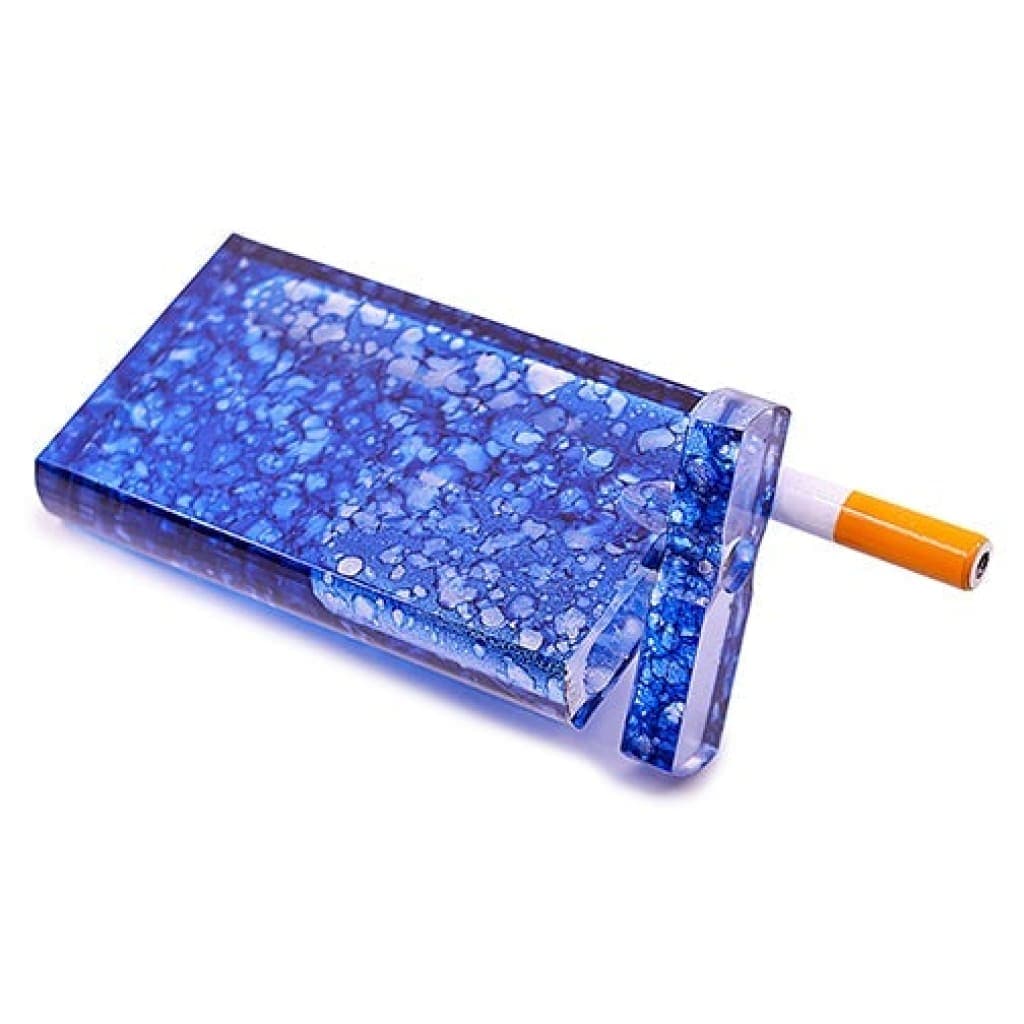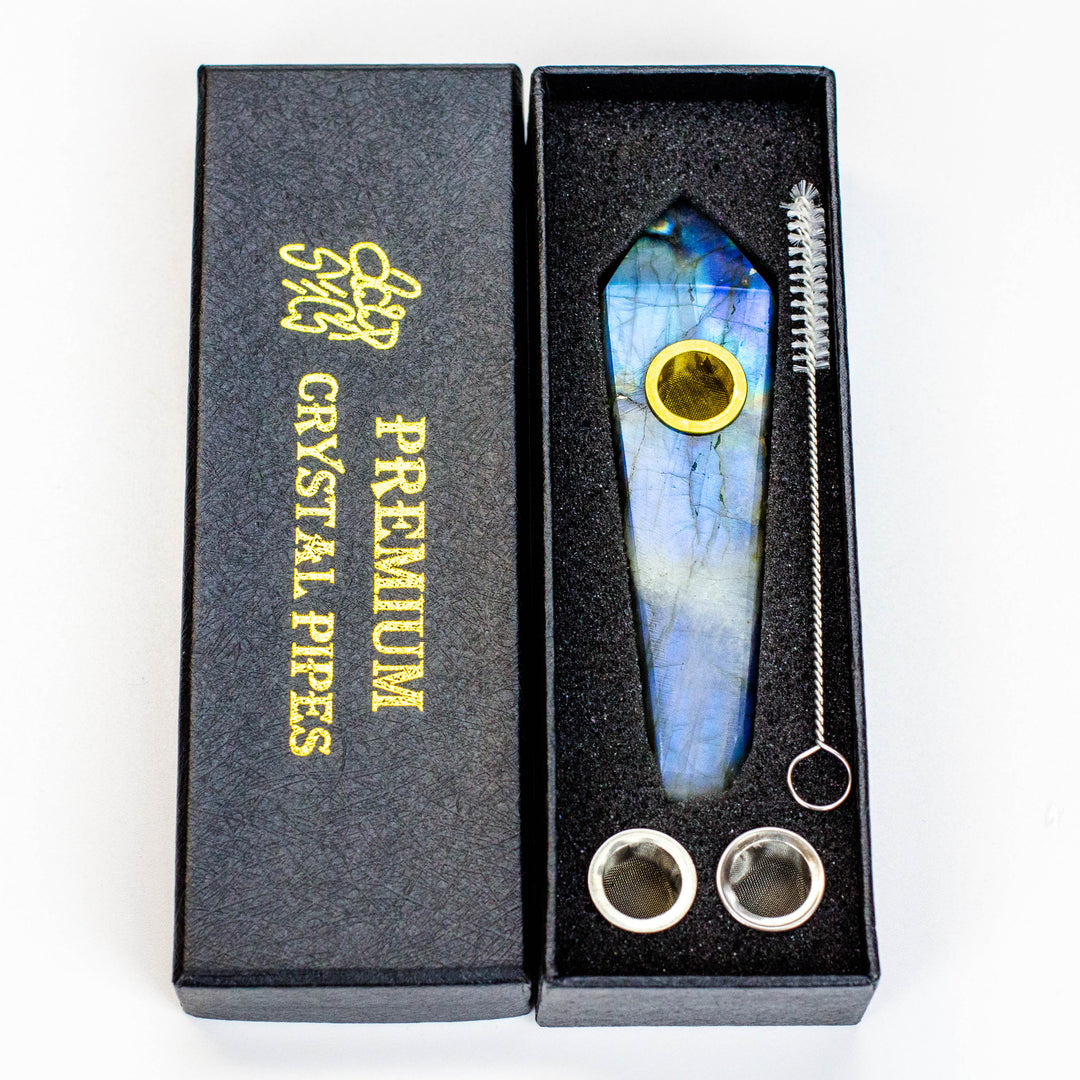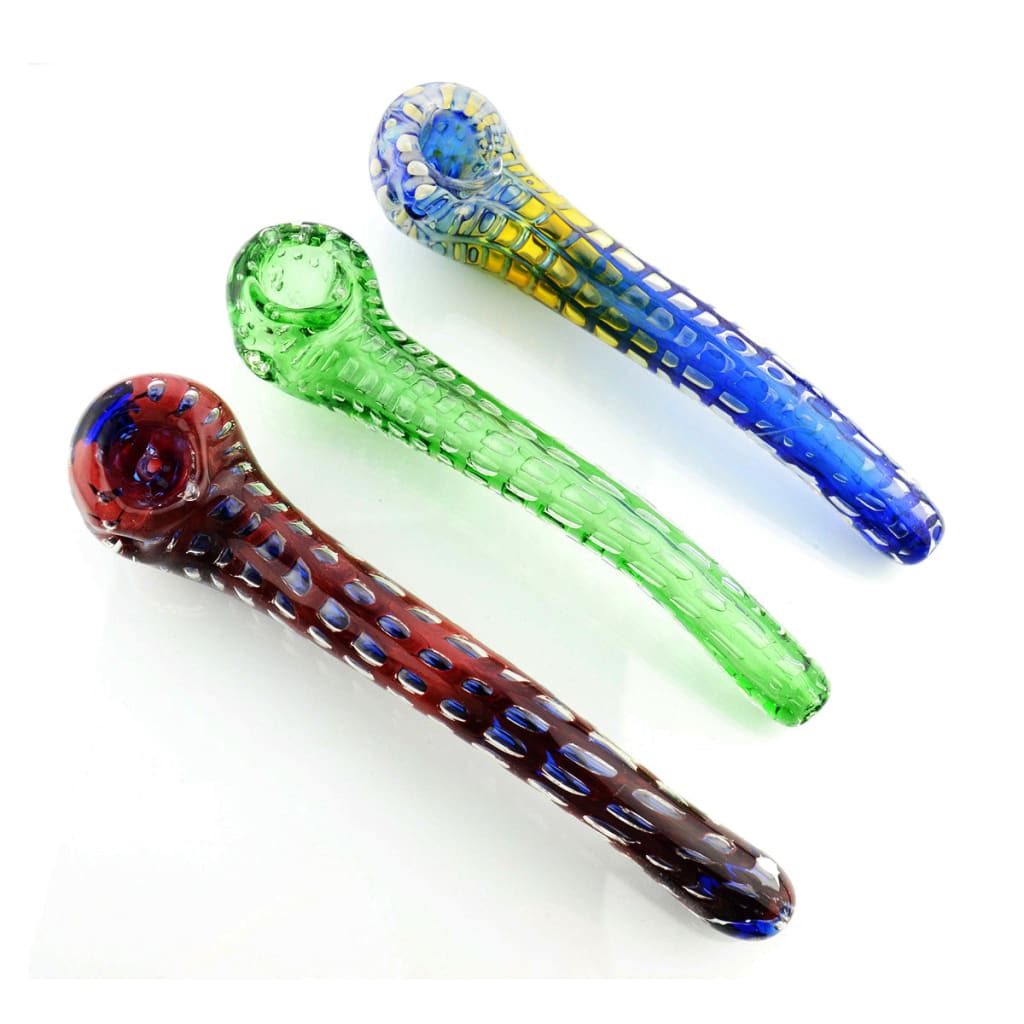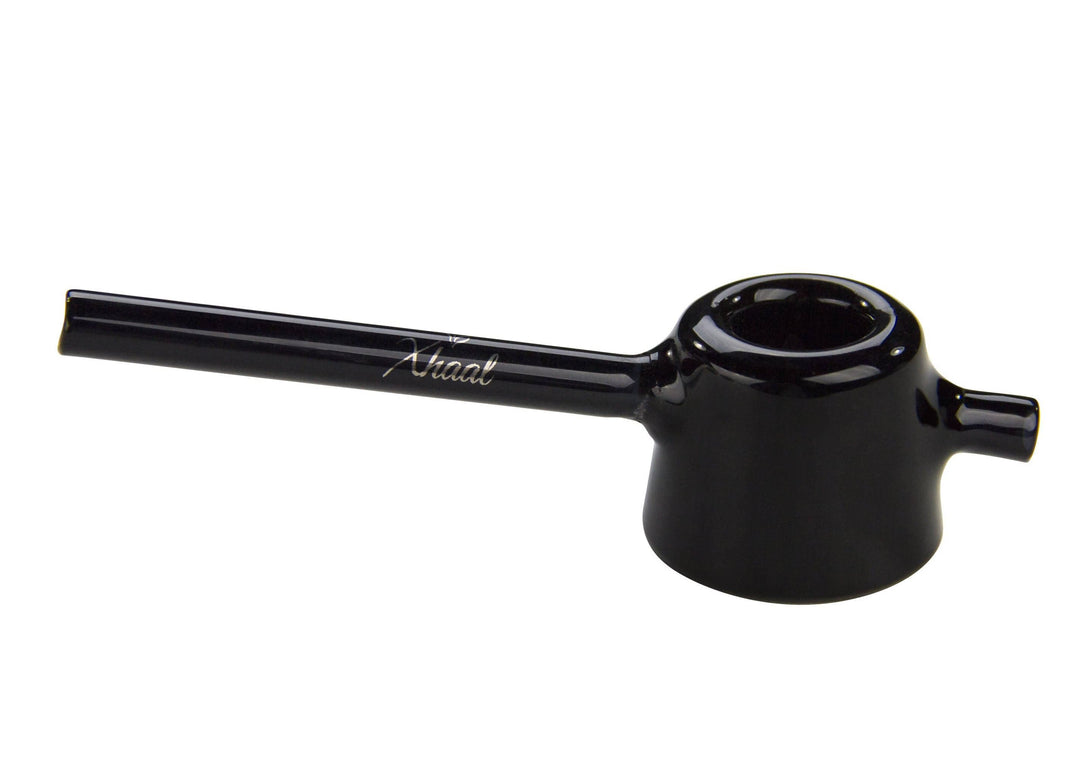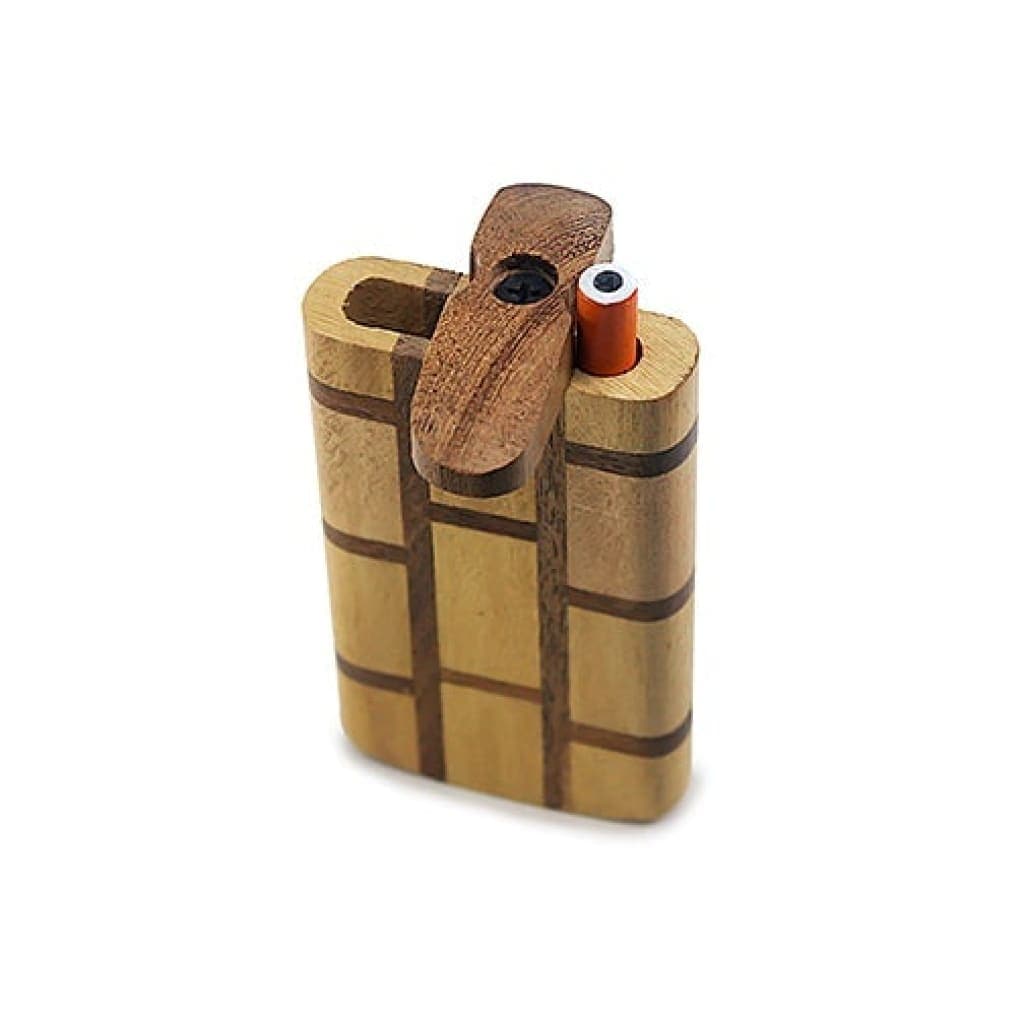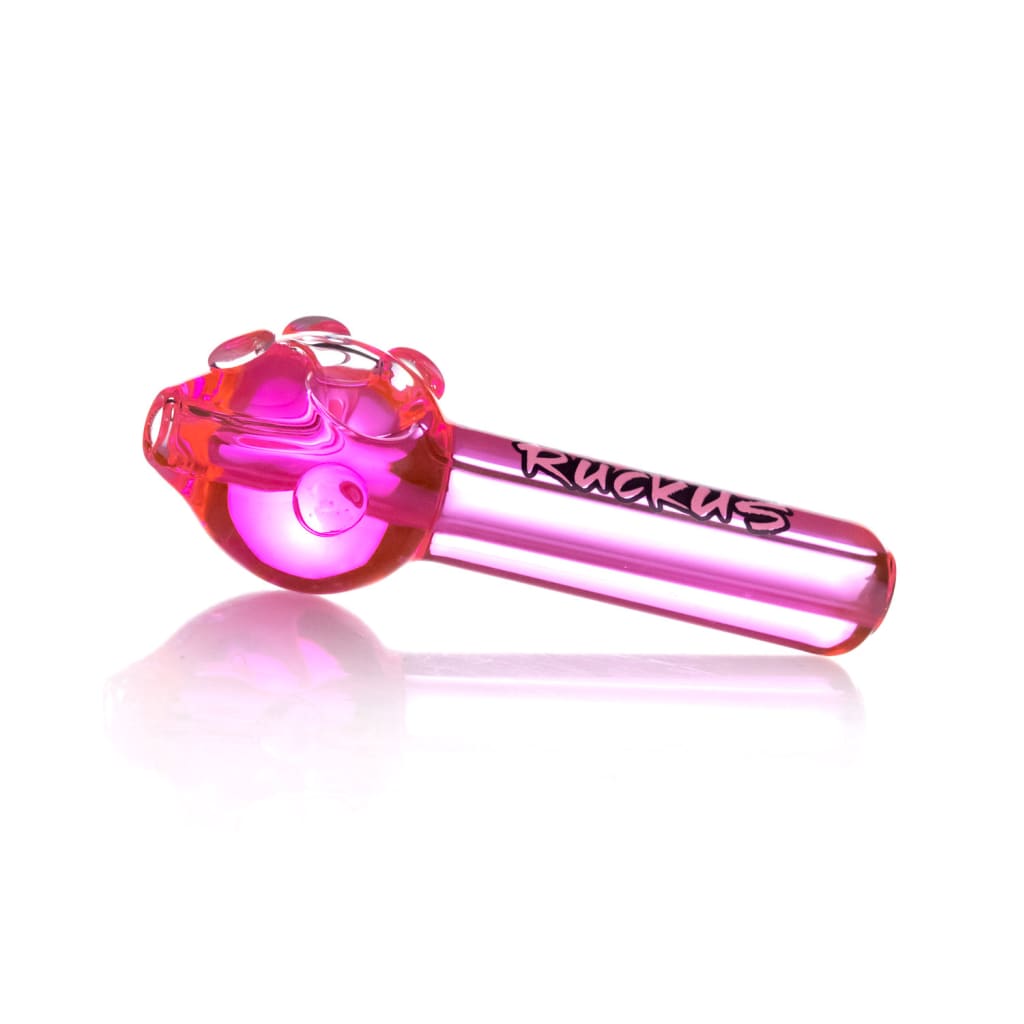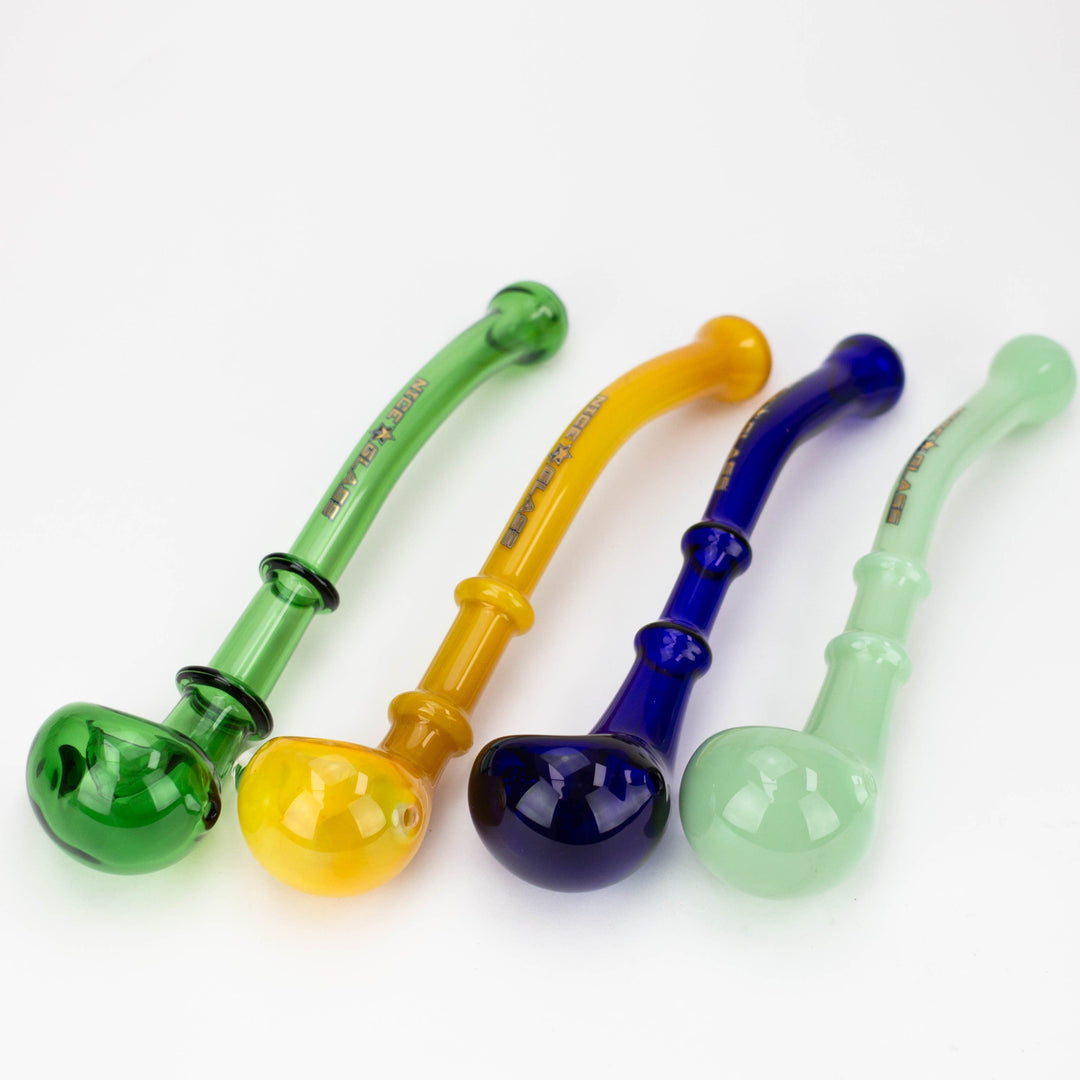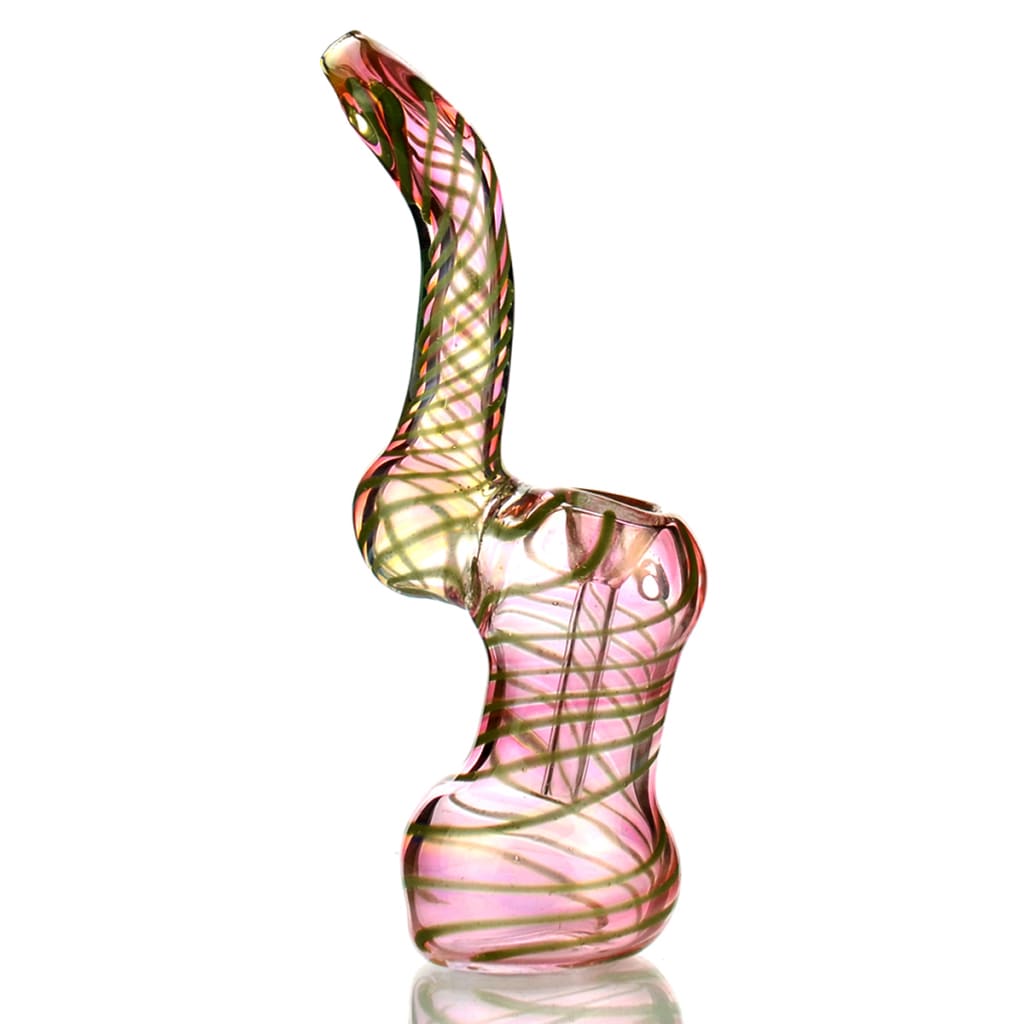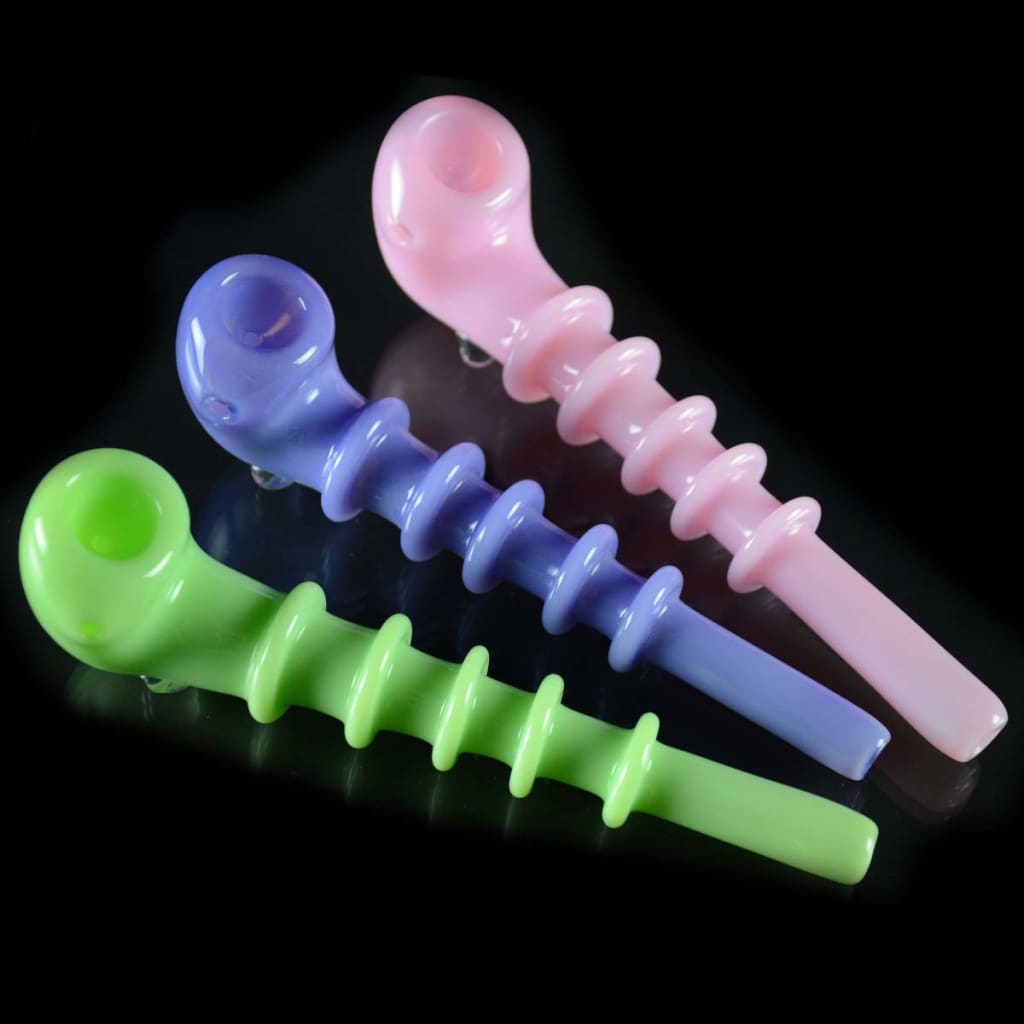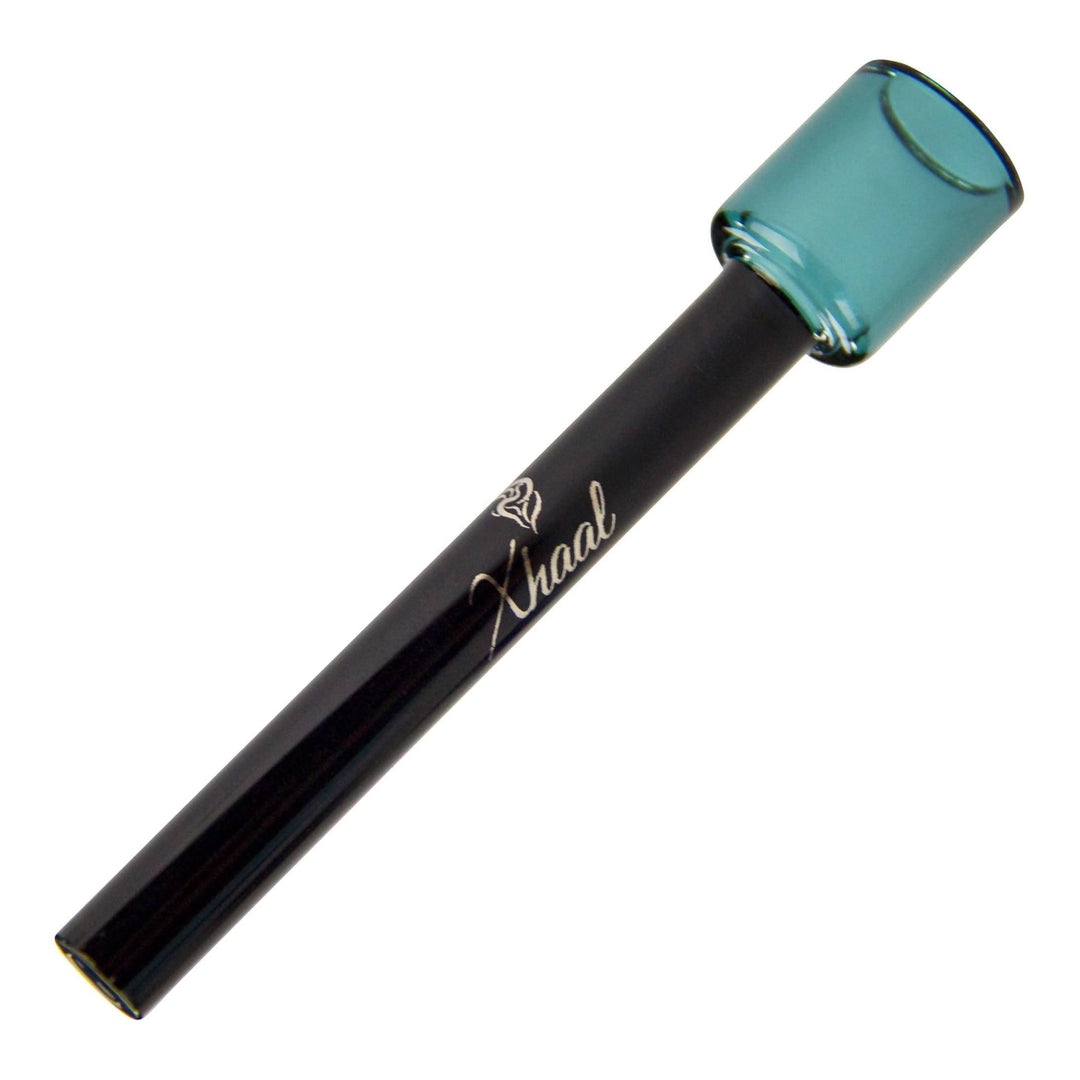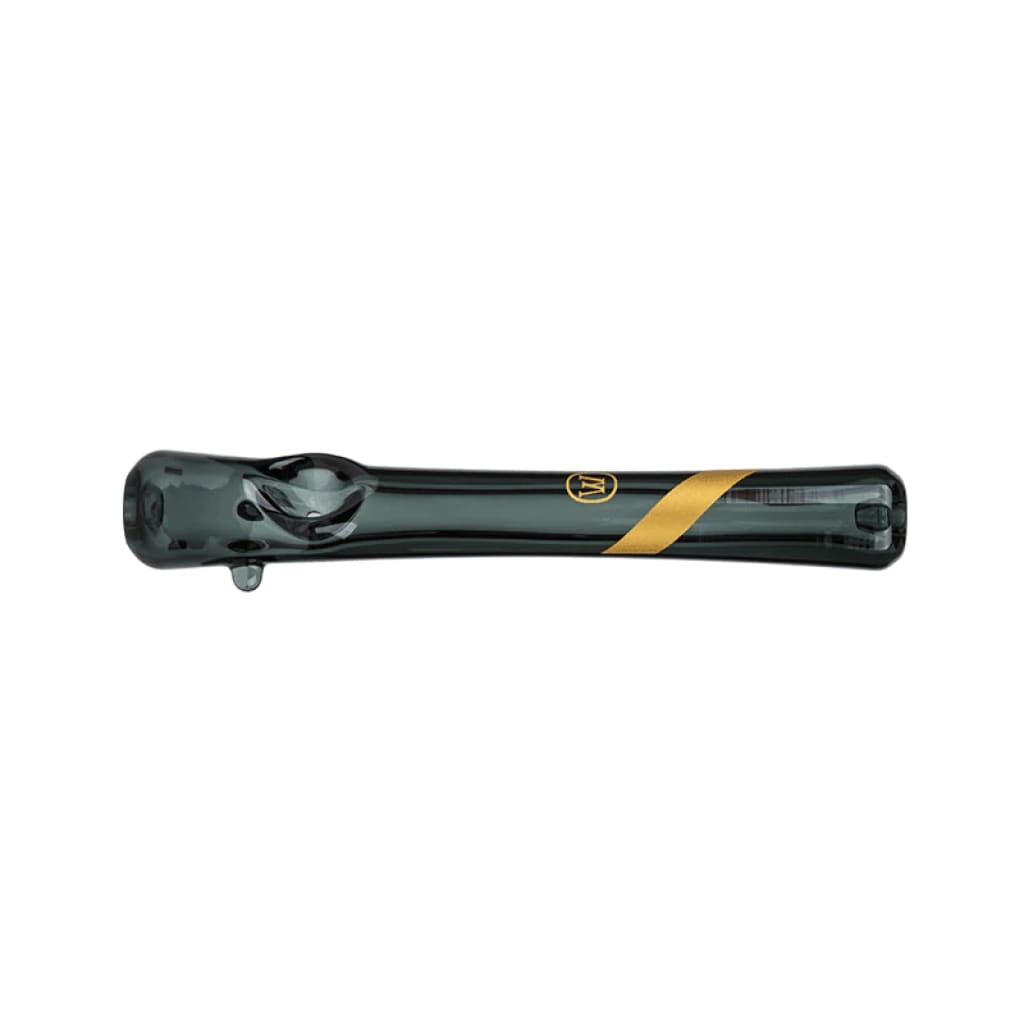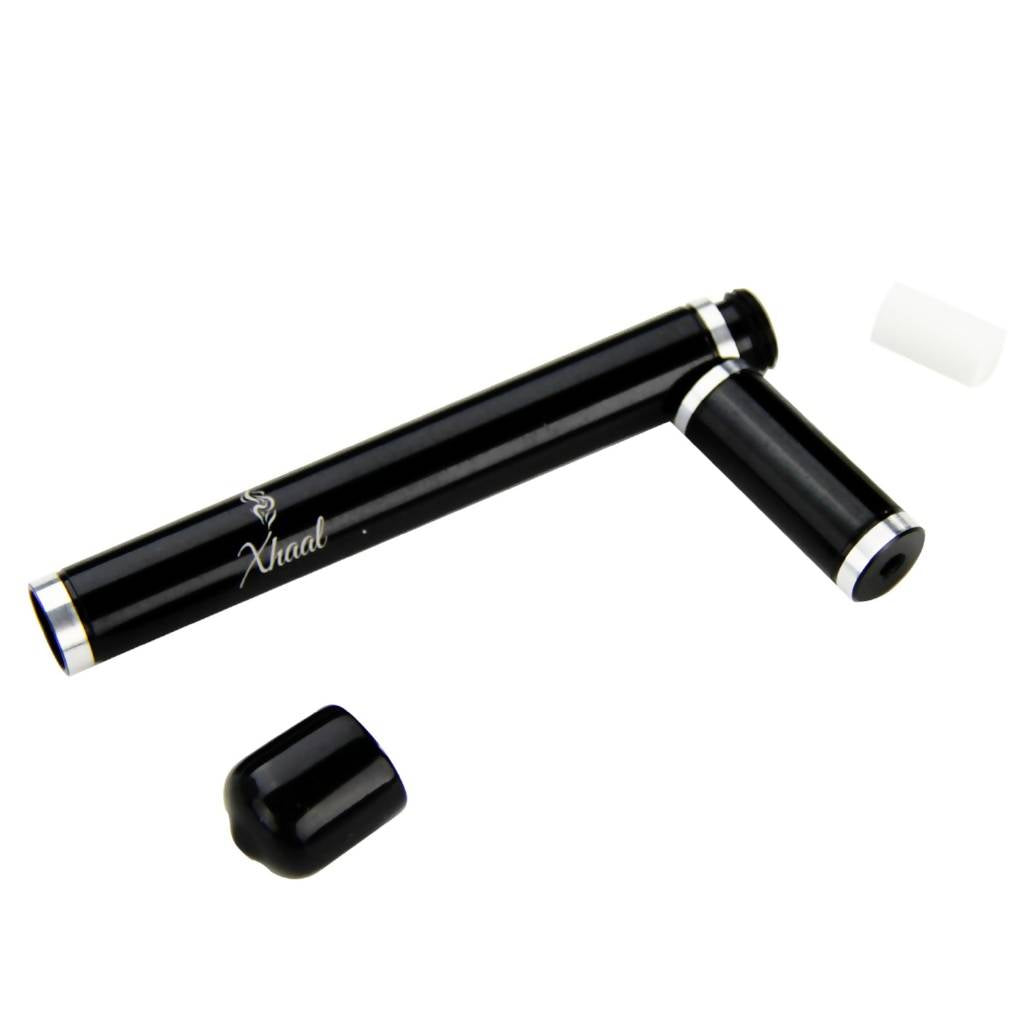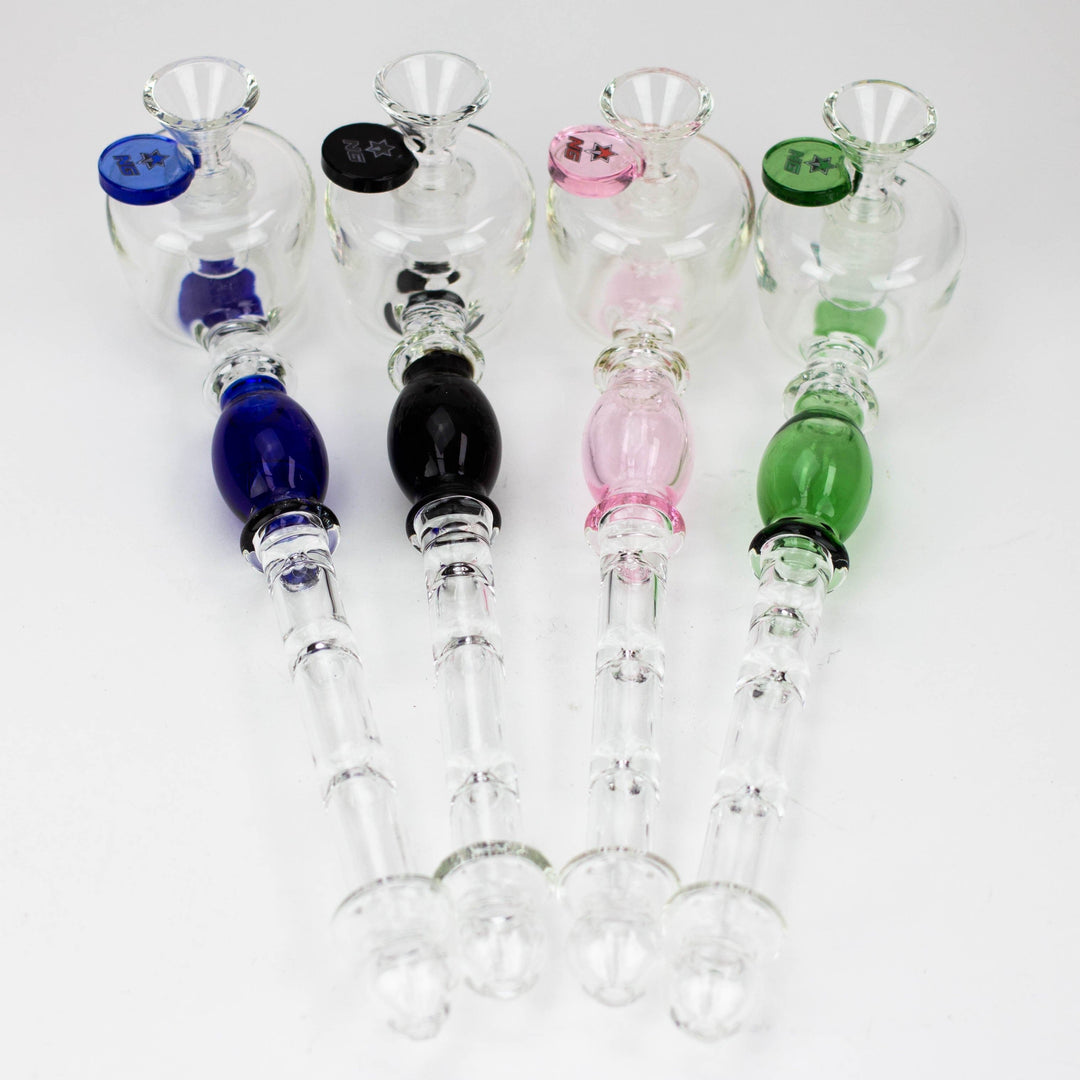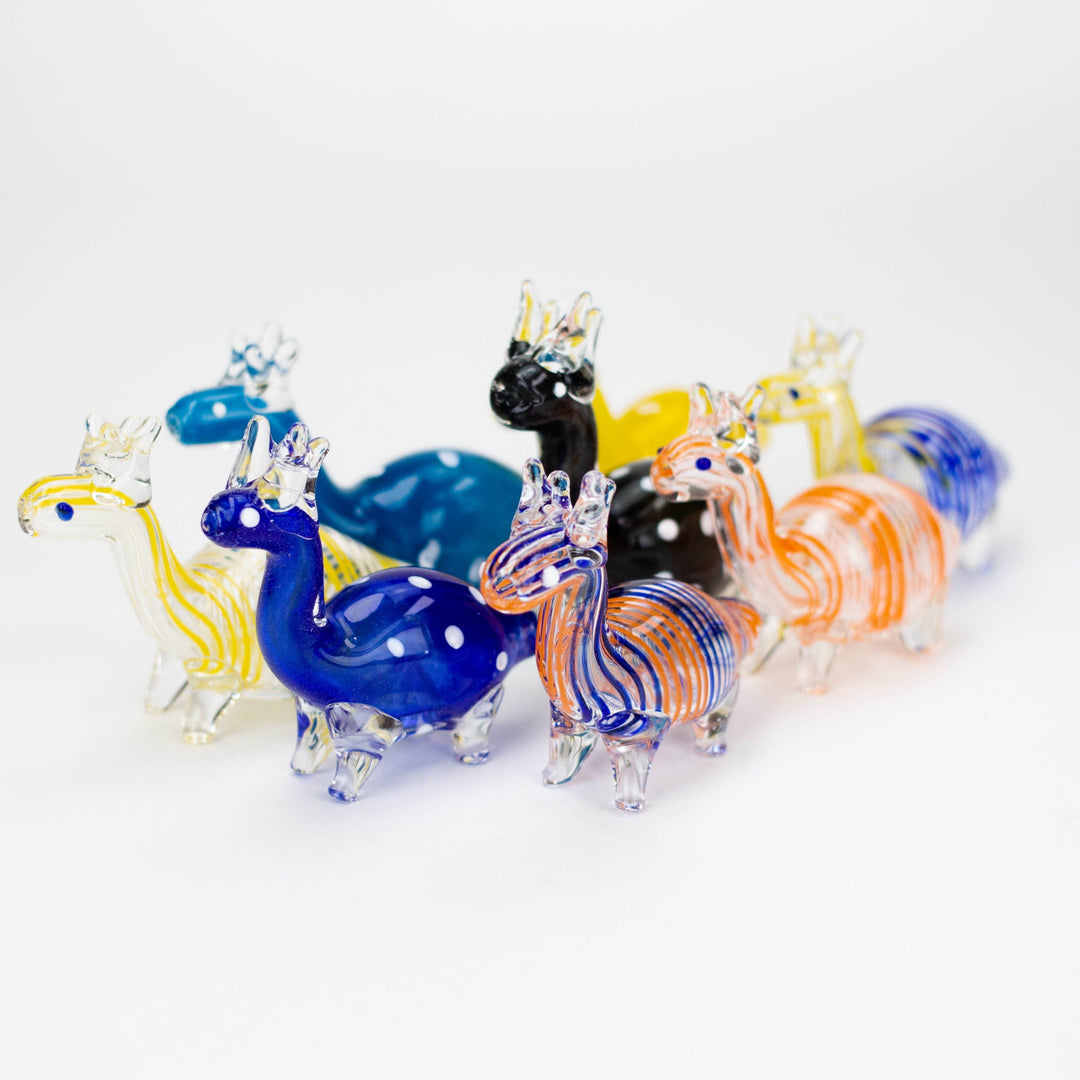
Glass Pipes
Glass Pipes have been the staple of the industry for decades. When they first started being produced, they were basic blown-out glass spoon pipe designs. Bob Snodgrass is credited with accidentally inventing the color-changing glass pipe. It was through a process of fuming with gold or silver that the borosilicate glass would change colors when used. Soon after Bob's happy accident, the glass pipe industry exploded with creativity.
One of Bob Snodgrass's apprentices was Jason Harris. After apprenticing with Snodgrass, Harris went on to found Jerome Baker Designs. Through the '90s and early 2000s, Jerome Baker was one of the most well-known glass bong manufacturers globally. In 2003 Harris was arrested by the Federal Government for selling bongs and glass pipes.
For many years the glass pipe industry in America went underground due to fear of prosecution by the Feds. Throughout the early 2000s, Glassblowers and distributors were raided by the Federal government. Trade shows like C.h.a.m.p.s. In Las Vegas, nothing more than a handful of mom & pop businesses had the guts to show up and sell their wares.
Eventually, the industry saw a relaxation toward the selling of its products. This has gone hand in hand with the legalization of cannabis on the state level. Today you can find glass pipes, wholesale hand pipes, and spoon pipes online for sale and with free shipping to anywhere in the US.
Glass Pipes Today
In today's market, glass pipe choices can seem overwhelming, especially for the beginner. Some standard terminology for a glass pipe can be a glass hand pipe, spoon pipe, glass pipe, bowl, steamroller, sherlock, to name a few. Essentially they will all perform similar functions and be made from pyrex glass.
Early glass pipes didn't have carburetors. They were added into later designs to allow for the user to mix air into the chamber. This effectively gives the user a larger “hit” than he would have experienced without the carburetor.
Different Types Of Glass Pipes
The main difference in many pipes is going to be the style in which they are made. A standard glass spoon pipe gets its name from the shape of the pipe. The pipe has a blown-out bowl where your flower goes, and it makes the pipe look like a spoon.
A sherlock style pipe is reminiscent of Sherlock Holmes smoking pipe. It has a J shape to the pipe's body, which makes the bowl come up and toward you. At the same time, a spoon pipe has the bowl right out in front of your face.
Steamrollers are typically straight glass tubes with the bowl being away from you and the carburetor on end. The main difference between a steamroller vs. a glass hand pipe is the placement of the carburetor. With the carburetor, in the end, you get a direct injection of air into the chamber for a faster, harder hit when smoking. It's almost like shotgunning, but without the need for another person.
Different Techniques Used To Blow Pipes
Early glass pipes were nothing more than clear glass bowls used for smoking. One of the first techniques used in glass bowls was fuming. Fuming is where gold or silver is heated, and the fumes are applied to the inside of the pipe. Once fumed, when the pipe is used, it will change colors. Hence the term “color-changing glass pipe.”
From fuming, glass blowers ventured into more “inside out” styles of glass art. Inside out literally means the pipe is blown from the inside out. The glassblower blows out the glass tube so that they have access to the inside of it. They can then apply things like fuming and other designs. Once they are done with the inside out work, they close the tube back up and shape it into a glass pipe.
Cane work is a style of inside out work where the blower uses colored glass rods, or “cane,” to create designs inside the pipe before it is closed back up. They tend to look like lines or squiggles drawn inside the glass pipe.
Cane work eventually morphed into latticinio work. Latticino is where you use different colors of glass rob and melt them into one glass rod. They are typically twisted and make a design that looks similar to a DNA helix. Once made, they are applied similarly to how the cane is applied.
Glassblowers took these techniques one step further by creating what is known as wig-wag designs. Early wig-wag was nothing more than an extremely tight deign drawn inside the glass tube that left no empty glass showing. It was nothing but solid colored glass.
Dichroic glass has been mixed with the latter styles for many years. Dichroic glass is basically a glass strip that is applied in the glass pipe. It appears glittery and multicolored. It shimmers in the light. Dichro tends to cost more than standard glass, so it is typically used sparingly in production pieces.
Glass Colors Get An Upgrade
Creating modern-day glass pipes would not be possible without the wide variety of vivid colors of a glass rod. In the early days, colors were limited, and artists had to be extremely creative with their designs. One of the best known to change the color rod scene was Northstar. With colors like root beer, & unobtanium, they allowed glass artists to create things that seemed impossible before.
More recently, in glass history, Trautman, the makers of Slyme glass rods, has impacted the lampworking scene. At one point, Slyme green seemed to be everywhere, and everyone was working with it. It gave an opaque green appearance when worked into a pipe. The downside was that it costs about twice as much as another colored glass rod.
The Rise of Themed Glass Pipes
Modern glass blowing has brought us the rise of glass pipes with a specific theme. Whether they are made into your favorite cartoon character or animal, the skills used to make them tend to be similar.
Hand-carved glass techniques gave way to this phenomenon known as themed pipes. It's where you use metal tools to form the glass into shapes and patterns to create a 3d looking creature, person, place, etc... The hand-carved creations are typically applied to the outside of a pipe but can also be used inside and around.
What Does The Future Hold For Glass Pipes?
The crafting of glass pipes has been a long interesting journey. Like most industries, when you look back, you can't believe how far it has come. With that in mind, history will surely repeat itself. In 20 years, we will look back and see today's creations as a more primitive approach to what is currently being made. Artists will continue to perfect techniques that were thought to be impossible just a few years before.
The envelope will constantly be pushed for what is possible and what someone is willing to pay for a functional piece of glass art. As legalization expands, so will the possibilities of what is possible with pipe making. No matter how far glass blowing has come, and no matter how far glass blowing goes, we wouldn't be where we are today without the pioneers like Snodgrass.


